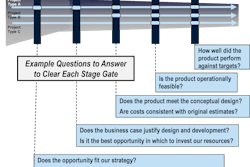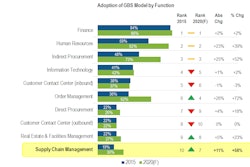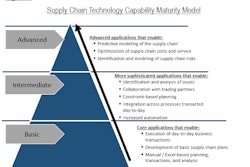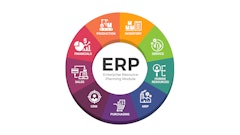Atlanta — January 19, 2007 — Six Sigma is far from a "silver bullet," for executives seeking to reduce cost and improve overall quality of back office operations, according to new research from business advisory firm The Hackett Group.
Many executives use Six Sigma or other continuous improvement programs to drive enhancements in finance, information technology (IT), procurement, human resources (HR) and other selling, general and administrative (SG&A) functions. But according to Hackett research, many executives fail to realize the benefits of these initiatives because Six Sigma is, by definition, an incremental process improvement methodology and is not appropriate for situations that require significant transformational change.
According to Hackett research, executives can reduce annual SG&A costs by $60 million per billion in revenue by achieving world-class performance in four core SG&A areas of finance, IT, procurement and HR. At the same time, these world-class performers show superior effectiveness, delivering higher quality services, increased economic returns and reduced risk.
The Role of Six Sigma
Many Hackett clients find Six Sigma to be a powerful tool for incremental improvement. Using a combination of Six Sigma and Lean, one U.S. client was able to achieve major progress in accounts payable, including a 50 percent reduction in payment processing time, largely by identifying errors and eliminating non-value-added activities. At another Hackett client, Six Sigma played a key role in the organization's ability to decrease cycle times and reduce costs as they built a global shared services organization. Overall, Hackett's research shows that 86 percent of all finance shared services organizations have a strong commitment to continuous improvement programs such as Six Sigma.
"Six Sigma can enable companies to generate incremental improvement spanning both efficiency and effectiveness performance across the back office," explained Hackett President of Global Enterprise Solutions Richard T. Roth. "But it's not a silver bullet and only works in the right circumstances. It is a demanding discipline that must be used carefully."
Roth said that while Six Sigma is useful for making incremental improvements, it's not the best tool when the goal is broad transformational change. "It's like using a screwdriver to make a structure more stable when a hammer is required," he said. "Increasing efficiency by $60 million per billion in revenue does not take place through small, incremental improvements. Some executives will find that their problems are simply too endemic to be addressed by Six Sigma alone."
Failure Factors
Hackett Senior Business Advisor Penny Weller, who also holds the titles of PhD, CMA and Motorola Certified Black Belt, elaborated on several factors that often lead companies to fail at their Six Sigma initiatives. "Six Sigma is great, particularly for companies seeking to streamline operations and eliminate variation in processes," Weller said. "But like any tool, it can be used properly or improperly, to varying results. The goal is to create a continuous improvement mindset that is embraced at all levels of the organization."
Weller said that some companies fail at Six Sigma because they don't personalize the program, ignoring their company's unique culture. They can take an approach that is too theoretical, trying to do "pure" Six Sigma, and in the process ignore the human side of the equation. "It's critical that companies which embark on these initiatives be prepared to address the tremendous change management challenges that are likely to arise," Weller said. "That takes planning and preparation, along with strong support from senior management."
Other companies fail because they take a piecemeal approach, Weller added. "If a company is already using Six Sigma in one area, even if it's unrelated, they should probably strive to use their in-house expertise as a starting point, rather than select another continuous improvement approach," she said.
Finally, Weller said that some companies simply fail to take the appropriate customer-centered outlook. "Particularly when implementing Six Sigma in a shared services environment, it's critical for companies to understand the needs of their internal customers and to factor that into any changes they are considering," she concluded.
Many executives use Six Sigma or other continuous improvement programs to drive enhancements in finance, information technology (IT), procurement, human resources (HR) and other selling, general and administrative (SG&A) functions. But according to Hackett research, many executives fail to realize the benefits of these initiatives because Six Sigma is, by definition, an incremental process improvement methodology and is not appropriate for situations that require significant transformational change.
According to Hackett research, executives can reduce annual SG&A costs by $60 million per billion in revenue by achieving world-class performance in four core SG&A areas of finance, IT, procurement and HR. At the same time, these world-class performers show superior effectiveness, delivering higher quality services, increased economic returns and reduced risk.
The Role of Six Sigma
Many Hackett clients find Six Sigma to be a powerful tool for incremental improvement. Using a combination of Six Sigma and Lean, one U.S. client was able to achieve major progress in accounts payable, including a 50 percent reduction in payment processing time, largely by identifying errors and eliminating non-value-added activities. At another Hackett client, Six Sigma played a key role in the organization's ability to decrease cycle times and reduce costs as they built a global shared services organization. Overall, Hackett's research shows that 86 percent of all finance shared services organizations have a strong commitment to continuous improvement programs such as Six Sigma.
"Six Sigma can enable companies to generate incremental improvement spanning both efficiency and effectiveness performance across the back office," explained Hackett President of Global Enterprise Solutions Richard T. Roth. "But it's not a silver bullet and only works in the right circumstances. It is a demanding discipline that must be used carefully."
Roth said that while Six Sigma is useful for making incremental improvements, it's not the best tool when the goal is broad transformational change. "It's like using a screwdriver to make a structure more stable when a hammer is required," he said. "Increasing efficiency by $60 million per billion in revenue does not take place through small, incremental improvements. Some executives will find that their problems are simply too endemic to be addressed by Six Sigma alone."
Failure Factors
Hackett Senior Business Advisor Penny Weller, who also holds the titles of PhD, CMA and Motorola Certified Black Belt, elaborated on several factors that often lead companies to fail at their Six Sigma initiatives. "Six Sigma is great, particularly for companies seeking to streamline operations and eliminate variation in processes," Weller said. "But like any tool, it can be used properly or improperly, to varying results. The goal is to create a continuous improvement mindset that is embraced at all levels of the organization."
Weller said that some companies fail at Six Sigma because they don't personalize the program, ignoring their company's unique culture. They can take an approach that is too theoretical, trying to do "pure" Six Sigma, and in the process ignore the human side of the equation. "It's critical that companies which embark on these initiatives be prepared to address the tremendous change management challenges that are likely to arise," Weller said. "That takes planning and preparation, along with strong support from senior management."
Other companies fail because they take a piecemeal approach, Weller added. "If a company is already using Six Sigma in one area, even if it's unrelated, they should probably strive to use their in-house expertise as a starting point, rather than select another continuous improvement approach," she said.
Finally, Weller said that some companies simply fail to take the appropriate customer-centered outlook. "Particularly when implementing Six Sigma in a shared services environment, it's critical for companies to understand the needs of their internal customers and to factor that into any changes they are considering," she concluded.


















